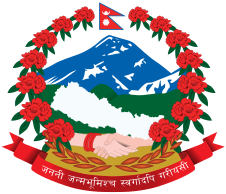How difficult is Everest Base Camp Trek

While discussing the Everest base camp trek difficulty, we need to understand the Everest trek in depth. The tools for difficulty measurement are based on several factors that distinguish their grade and also perception. Feedback from the trekkers of different age groups makes a precise assessment. Moreover, additional factors that influence the difficulty are altitude, trail, amenity, reliability, climate, immunity, and proper gear. The above-mentioned conditions are pivotal, which makes your Everest trek difficult, but if you do it wisely, you can minimize them.
What is the age limit for the Everest Base Camp trek?
Fit Everest trekker
There is no written age limit for the Everest base camp trek, but you should consider one thing: a trekker should be strong enough to walk. The minimum age must be above 10 to do the Everest base camp trek because you have to walk into the thin air above the rugged trail, dealing with various climate and weather conditions. And for an old-age trekker, you should have to be physically fit, an experienced hiker, and free from breathing-related diseases like asthma.
What preparation should be done before going trekking?
Cardio Exercise for Preparing for the Everest trek
Here are a bunch of tasks you should do before coming for the Everest trek, with the most crucial one being being physically well. You should prepare yourself physically by doing several exercises like cardio, cycling, running, yoga, and stretching. If you are planning to trek with a new pair of shoes, this is the right time to use them while walking and running; otherwise, it would create blisters and foot injury.
What kind of gear and outfits are required?
Genuine gear for the Everest trek
It is very crucial to have genuine gear and an outfit for the Everest base camp trek; otherwise, a small error can cause severe consequences. Thus, there must not be any compromise when it comes to gear selection. Trekking season is meant to be stable climate-wise, but sometimes it can be severe; thus, you need to be well prepared. You need to bring a sturdy bag, multiple pairs of long-sleeve t-shirts and trousers, an ultra-warm down jacket, a windproof jacket, a genuine raincoat, gaiters, gloves, a woolen cap, a sun hat, sunglasses, multiple pairs of socks, sandals, sneakers, an ultra-warm sleeping bag, a torch, and a headlamp.
What kind of medication and toiletries are needed?
Medication for the Everest trek
Before coming for the Everest base camp trek, another thing you don’t want to miss is medication and toiletries. You must be equipped with a complete first aid kit along with some essential medicines necessary for altitude sickness, food poisoning, diarrhea, and muscular pain. And yes, don’t forget to bring a pulse oximeter, which is crucial. Besides medication, another thing you must not miss is toiletries during the Everest trek. You can’t get any of them at the teahouse because they are as simple as they sound. The list of toiletries you should not forget is Soap, Shampoo, shower gel, shaving kit, hand sanitizer, sunscreen, and face wash, and the most important are tissues and toilet paper.
What kind of food and snacks did we need to bring?
Energetic snacks for the Everest trek
It is very important to have a sufficient amount of snacks and lightweight food. The teahouse serves a variety of food, although you need to have snacks that you can eat while trekking at the teahouse at any time. Energetic snacks play a vital role when you lose your appetite and can’t finish your meal prepared by your teahouse. You need to bring chocolate, candy, dry fruit mix, jerky, along with your favorite snack, and of course, don’t forget to bring your vitamins, minerals, protein, etc.
Here, let’s discuss the factor mentioned at the beginning, which plays a pivotal role during the Everest Base Camp trek. These points are prone to inconvenience and difficulty that could persist during your journey.
Trail: The trail in the Everest base camp trek region is improving consistently, although it is a combination of several dimensions, like uphill, downhill, flat, rugged trail, moraine walk, glacier walk, and granite spread trail.
Altitude: Another factor that poses difficulty to the Everest base camp trek is altitude. You go to walk over 2800 m to 5550 m, whereas you’re trekking above 4000 m most of the time.
Amenities: The teahouse in the Everest region is cozy, comfortable, clean, and nice but simple. You can’t expect the amenities that you have at your home. They burn a fire in the dining room every evening, but it doesn’t warm your room; thus, you have to rely on your sleeping bag and blanket provided. Restrooms are shared and are mostly located indoors near your room. Lower elevations have water-generated electricity, and higher elevations rely on solar energy; however, you can’t use high electricity-consuming devices.
Climate: The climate is supposed to be stable during the season (Mar/Apr/May/Sep/Oct/Nov), but sometimes it can change. Unfavorable climate conditions can severely ruin your day, so be well prepared.
Proper gear: Genuine gear plays a vital role behind every successful expedition; hence, you should never compromise on gear. Poor gear can easily ruin your journey, so always keep in mind to use the best gear.
Immunity: The journey to Everest base camp by trekking requires a healthy body, which is backed up by good immunity. Thus, you should build a vibrant immune system for the Everest base camp trek journey because you might have to deal with various health conditions.
After this brief discussion, we can assert that it is not very difficult to do the Everest base camp trek if you consider something. If you are interested in doing the Everest base camp trek and feeling doubtful because of the difficulty, forget that, wake up, and start now, and you can do it.


.png)
.png)






